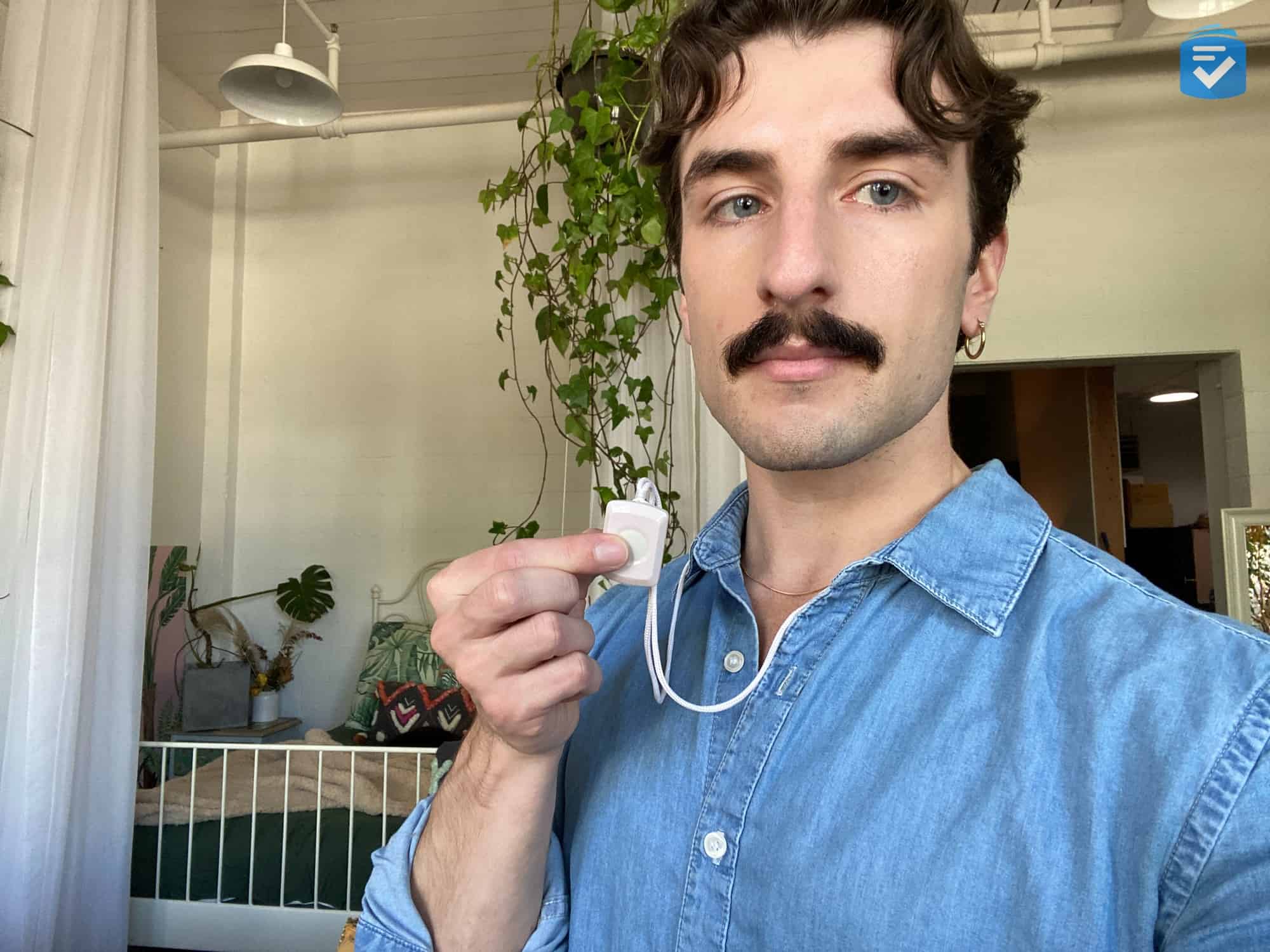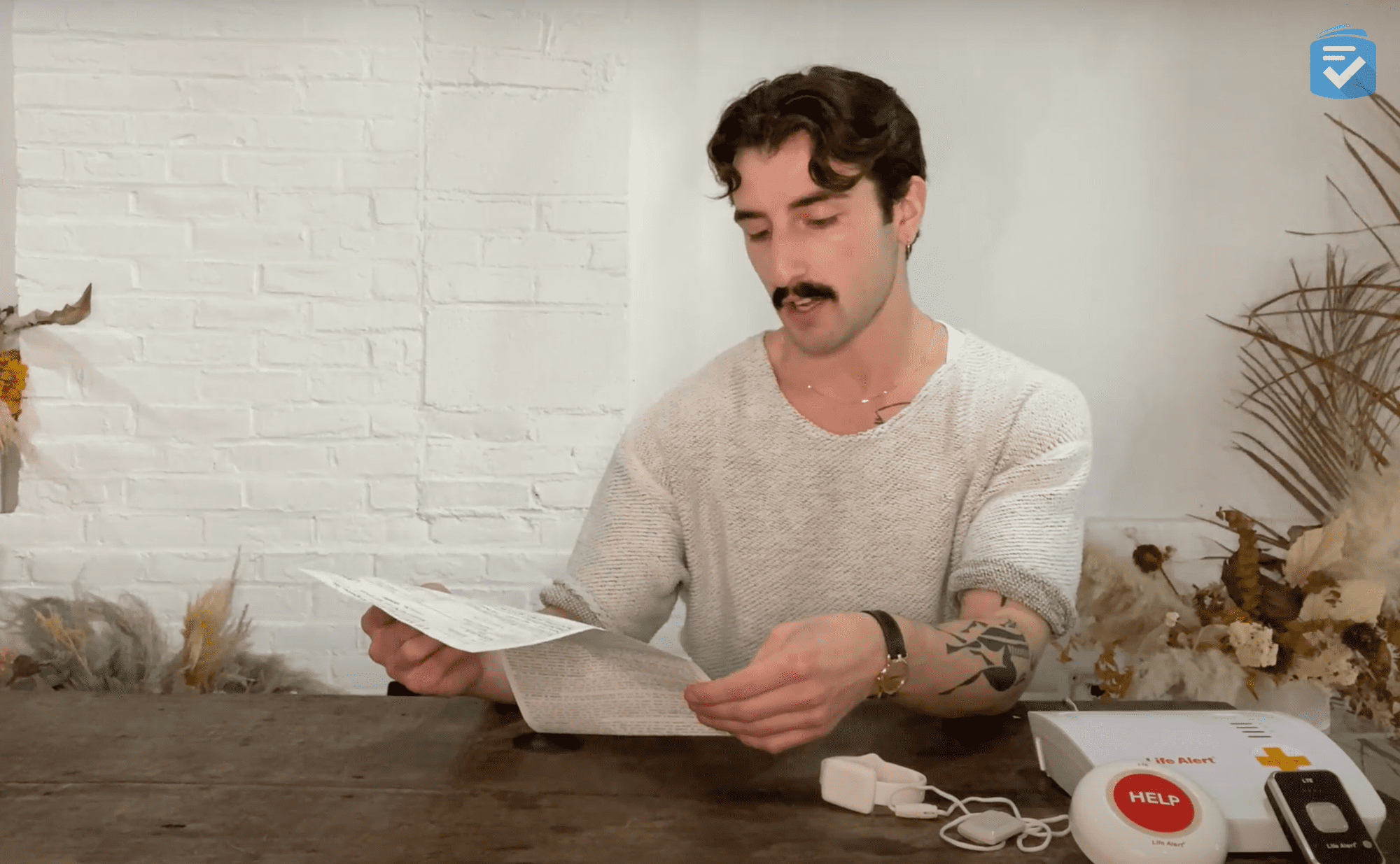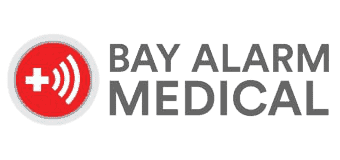
A Guide to Life Alert Costs and Contracts in 2025

Although widely known, Life Alert is one of the most expensive medical alert systems on the market, starting at $49.95 per month, plus activation fees. Unlike other medical alert companies, Life Alert requires a three-year service agreement, one that you can only exit through death or transition to round-the-clock care.
To put it in perspective, my Life Alert system costs $89.95 per month plus a one-time $198 activation fee. I’ll be required to pay these monthly costs for the next year, bringing my total first-year costs to $1,277.40
FYI: To find more affordable medical alert systems without long-term contracts, check out our rundown of the year’s best medical alert systems.
Low-Cost Alternatives to Life Alert
These companies won't lock you into three-year contracts, and in our tests, they provided much faster access to help than Life Alert.

Video Rundown of Life Alert Cost
Curious how much you stand to pay with Life Alert? Then watch this video, in which our Managing Editor, Ryan Molloy, walks through the nitty gritty of his Life Alert contract.
Life Alert System Costs Breakdown
| System | Micro Voice Pendant System (base unit) | HELP Button | On-the-Go + GPS (mobile help button) |
|---|---|---|---|
| Monthly Price | $49.95 | $20* | $20* |
| One-time fee | $95 | $198** | $198** |
| For use | In home | In home | In home and away |
| Equipment |
|
|
|
| Connection type | Cellular | Cellular | Cellular and GPS |
| Fall detection | No | No | No |
| Additional features |
|
|
|
*System must be bundled with the Help PERS LTE
**Activation fee reflects the price for a bundled system
Life Alert’s basic in-home system costs $49.95 per month. Their other two systems, the mobile unit and wall-mounted button, cost $20 per month apiece; however, neither of these devices can be purchased alone. You can purchase one or both of them in addition to the in-home system.
Life Alert Purchasing Process
To purchase a Life Alert system, you must contact the company via phone since they currently don’t sell products over the internet. During your phone call, you’ll be connected with a sales agent who will ask questions to determine which type of system you need.
Life Alert offers three medical alert systems: the in-home Micro Voice Pendant System, the HELP Button, and the mobile system with GPS. The latter two systems, however, cannot be purchased as stand-alone devices. Instead, you’ll have to purchase the Micro Voice Pendant System in addition to either or both systems.
Micro Voice Pendant System

The most basic Life Alert device, the Micro Voice Pendant System, costs $49.95 per month, with a one-time $95 activation fee. The system includes:
- 1 base unit (pictured above)
- 1 help button (pictured below)
FYI: According to the CDC, falls are the number one source of injury for older adults.1 A medical alert pendant or bracelet can help ensure your loved one gets help in the event of a fall.
The base unit serves as the center of your system. Pressing the help button will trigger a call to Life Alert’s dispatch center. The base unit also has a built-in microphone and speaker, which allows you to communicate with the dispatch agent, who will ask you about your emergency and send the appropriate help, whether it’s a nearby loved one or first responders.
The base unit operates on a cellular connection, so you won’t need a landline to connect to the Life Alert dispatch center. The device also has a built-in, rechargeable backup battery. In the event of a power outage, the battery will keep your system powered for up to 72 hours. Since most falls happen in the home2, this type of home-based system will suffice for many users.

The help button, worn as a pendant or bracelet (with the included wristband attachment), can also trigger a call to the Life Alert dispatch center. The device, however, doesn’t have a built-in speakerphone, and pressing the help button will instead trigger a call through the base station. Luckily, the speakerphone on the base unit is loud, and I could communicate with dispatch agents from multiple rooms away. That said, the help button can connect to the base unit only when it’s within 500 feet.
>> Read More: The Best Medical Alert Necklaces
HELP Button

The next Life Alert device functions as a wall-mounted help button. With its adhesive backing (or included mounting kit), you can place the button on your nightstand, the wall of your stairwell, or even in your shower. Life Alert recommends placing it in the shower or bathroom. Rated IP67 for water resistance, the button is ideal for bathroom use.
Unlike the wearable help button, the wall-mounted button has a built-in speakerphone and LTE cellular connection, which allows you to place it outside the range of your base unit and handle emergency calls directly from the button. The device also has a battery life of up to 10 years. When its battery is running low, the button will announce, “The battery is low.” When that happens, you can contact Life Alert’s service department to arrange for a replacement.
FYI: Clinical studies have found that even low-tech medical alert systems can significantly decrease the risk of hospitalization and death.
The wall-mounted help button technically costs an additional $20 per month, but it cannot be purchased as a stand-alone device. You must add it to your Micro Voice Pendant system, bringing your monthly charge to $69.95.
On-the-Go + GPS

The On-the-Go + GPS is, as you may have guessed, a mobile medical alert with GPS. Much like the wall-mounted help button, it has a built-in speakerphone and cellular connection, which allows emergency calls to be handled directly from the device.
What differentiates the On-the-Go + GPS, however, is its built-in GPS. When I placed test calls with the mobile help button, dispatch agents were able to accurately determine my location within several yards, making this device ideal for users with active lifestyles.
Unfortunately, unlike mobile systems from Medical Guardian and Bay Alarm Medical, this mobile device does not pair up with a caregiver app.
Similar to the wall-mounted button, the On-the-Go + GPS costs only $20 per month — but it cannot be purchased alone. Instead, you’ll need to bundle it with the Micro Voice Pendant system, bringing your cost to $69.95 at a minimum.

FYI: Life Alert doesn’t offer fall detection. If you’re looking for a system with this feature, then take a look at our guide to fall-detection devices.
Life Alert Contracts

No matter which system you purchase, Life Alert requires you to lock into a binding three-year contract. For the medical alert industry, this is unprecedented. Several companies offer discounts if you pay on an annual basis, but most allow you to pay monthly. At any time, you can cancel your service, send back your equipment, and stop making payments. Life Alert, however, keeps you on the hook with two notable exceptions.
Termination of Contract
Section three of my Life Alert service agreement notes:
Upon death of the Subscriber(s), this thirty-six month agreement is automatically terminated. This agreement can also be terminated if Subscriber enters a skilled nursing facility or has 24-hour in-home professional care with documentation from an accredited health or social service organization.
Essentially, you may exit your Life Alert contract, ceasing monthly payments, if you either pass away or transition to around-the-clock care. I must note, however, that a skilled nursing facility would not necessarily include assisted living. Legally speaking, that leaves a bit of ambiguity as to whether a person moving to assisted living would be able to terminate their contract.
Monitoring Fee Refund
Section four of my Life Alert service agreement states:
Without waiver of any of the Limitations and Liability set forth herein, in the event that the Subscriber dies, for any reason, while at home alone during the initial three-year term of this Agreement, Company shall refund the monitoring fees and Initial fee paid by the subscriber to an authorized representative upon the submission of a written proof that the Subscriber died home alone and provides a death certificate.
As noted in section three of my contract, death alone is not enough to warrant a total refund of your monitoring fees. However, if a person dies alone in their home during the first three years of using Life Alert, then an authorized representative can potentially receive a refund of all monitoring fees. Again there is a bit of legal ambiguity here. While a person can potentially die at home, they often are not pronounced dead until brought to a hospital or other care facility, and it’s unclear if this situation would qualify for a Life Alert refund.
Regardless, death in the home alone will not warrant a refund of your Life Alert activation fees to an authorized representative.
Video Rundown
In this short video, our Managing Editor, Ryan Molloy, highlights the more egregious portions of his Life Alert contract.
FYI: Not sure which medical alert system has the best features? For a comprehensive system comparison, read our helpful guide on Life Alert vs. Lifeline.
Is Life Alert Worth the Price?
“I’ve fallen, and I can’t get up!” is a phrase familiar to many of us since it was first spoken by the actress Dorothy McHugh in the late eighties.3 If you or a loved one ever falls in your home, Life Alert might be able to provide an essential lifeline to help. The company’s equipment is durable, and their dispatch agents are highly trained.
In my experience testing medical alert devices, however, there are several other companies that provide medical alerts of an equal caliber for less than half the price. To my knowledge, Life Alert is the only medical alert provider that locks users into three-year contracts.
To learn more about my experience using Life Alert, check out my hands-on Life Alert review.
Life Alert Is Great For:
- Lifetime warranties: Life Alert offers guaranteed lifetime warranties for their products. Another benefit is that the systems come with batteries that last between seven and 10 years.
- Comfortable devices: Life Alert’s wearables are high-quality and comfortable to wear. They’re one of our favorite medical alert bracelets.
Life Alert Is Not Ideal For:
- Fast response times: Averaging 120-second response times in our ten test calls, Life Alert is one of the slowest Medical Alert systems we’ve tested. For comparison, Medical Guardian systems answered our calls in an average of eight seconds.
- Flexible contract: By requiring three-year contracts that can be exited only through death or transition to a care facility, Life Alert has one of the most stringent contracts of any medical alert provider.
- Affordability: Life Alert’s most affordable system costs $49.95 per month, so they’re definitely on the pricier end of things. To find more affordable systems, check out our rundowns of Medical Guardian costs and MobileHelp costs.
- Automatic fall detection: Unfortunately, Life Alert is one of the few medical alert companies that doesn’t provide automatic fall detection, even with such expensive plans. If you’re looking for an alternative to Life Alert, you may want to check out my guide to Life Alert alternatives.
Compare Life Alert to Other Brands
Frequently Asked Questions
-
Is Life Alert covered by Medicare?
No, Medicare does not cover Life Alert, as medical alert systems do not fall on the list of “durable medical equipment” covered by Medicare Part B.
-
How much is Life Alert's monthly cost?
Life Alert systems cost between $49.95 and $89.95 per month, depending on which components you purchase. The basic in-home system (Micro Voice Pendant System) costs $49.95 per month. Adding either the wall-mounted help button or mobile pendant costs an additional $20 each per month, bringing the total to $69.95 for one additional component or $89.95 for both.
-
Is there a cheaper alternative to Life Alert?
Yes, there are cheaper alternatives to Life Alert like Medical Guardian, Bay Alarm Medical, and ADT Health. While Life Alert costs a minimum of $49.95 per month for an in-home system, Medical Guardian starts at $31.95, Bay Alarm Medical starts at $24.95, and ADT starts at $31.99.
-
Is Life Alert free for seniors?
No, Life Alert is not free for seniors. Medicare does not cover medical alert systems like Life Alert, so most people will pay out of pocket.









